4.5.5E: Gráficas de Funciones Logarítmicas (Ejercicios)
- Page ID
- 116818
ejercicio de la sección 4.5
Para cada función, encuentra el dominio y la asíntota vertical.
1. \(f\left(x\right)=\log \left(x-5\right)\)
2. \(f\left(x\right)=\log \left(x+2\right)\)
3. \(f\left(x\right)=\ln \left(3-x\right)\)
4. \(f\left(x\right)=\ln \left(5-x\right)\)
5. \(f\left(x\right)=\log \left(3x+1\right)\)
6. \(f\left(x\right)=\log \left(2x+5\right)\)
7. \(f\left(x\right)=3\log \left(-x\right)+2\)
8. \(f\left(x\right)=2\log \left(-x\right)+1\)
Esboce una gráfica de cada par de funciones.
9. \(f\left(x\right)=\log \left(x\right),\; g\left(x\right)=\ln \left(x\right)\)
10. \(f\left(x\right)=\log _{2} (x),\; g\left(x\right)=\log _{4} \left(x\right)\)
Esbozar cada transformación.
11. \(f\left(x\right)=2\log \left(x\right)\)
12. \(f\left(x\right)=3\ln \left(x\right)\)
13. \(f\left(x\right)=\ln \left(-x\right)\)
14. \(f\left(x\right)=-\log \left(x\right)\)
15. \(f\left(x\right)=\log _{2} (x+2)\)
16. f\ izquierda (x\ derecha) =\ log _ {3}\ izquierda (x+4\ derecha)\]
Encuentre una fórmula para el gráfico logaritmo transformado que se muestra.
17. 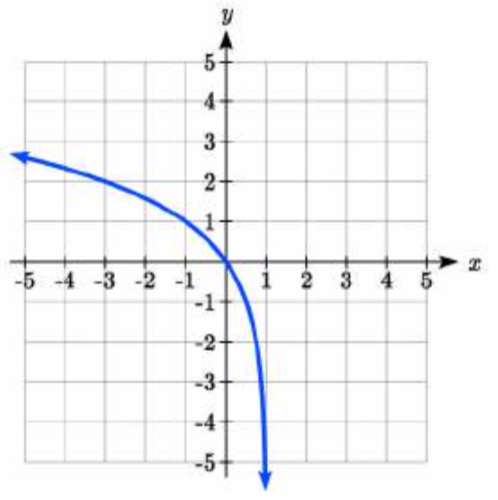 18.
18. 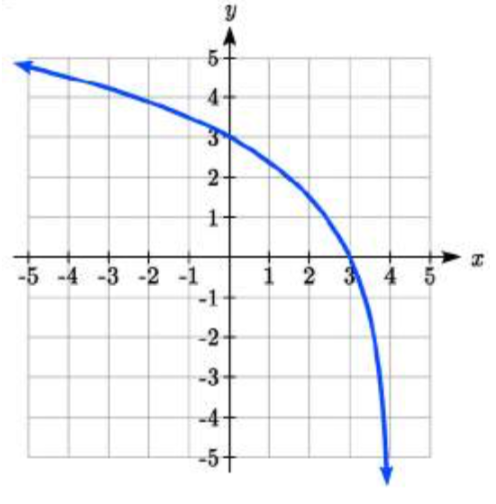
19. 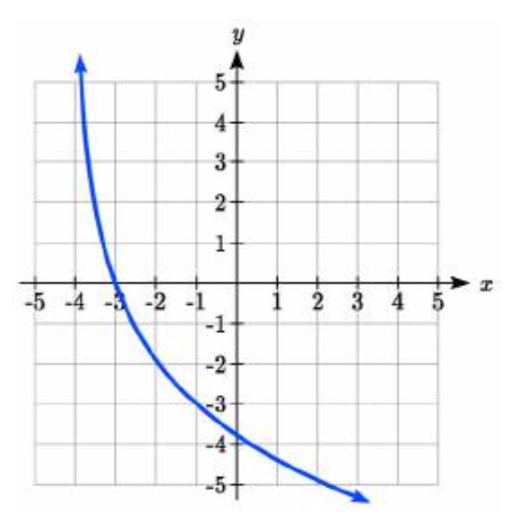 20.
20. 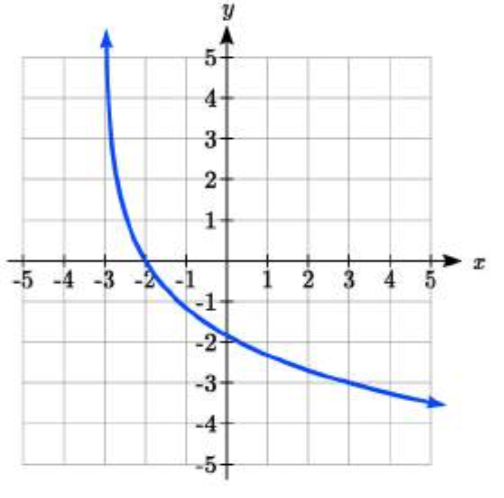
Encuentre una fórmula para el gráfico logaritmo transformado que se muestra.
21. 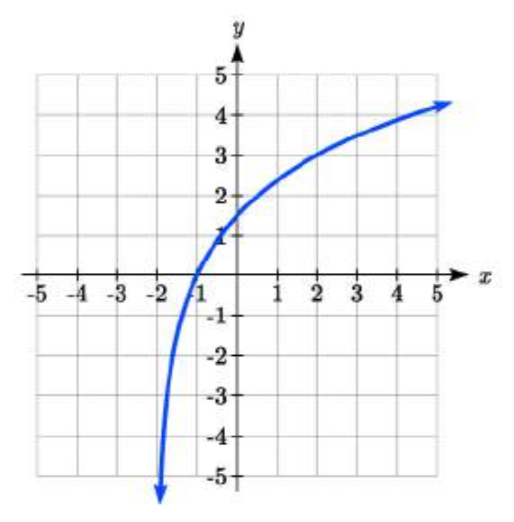 22.
22. 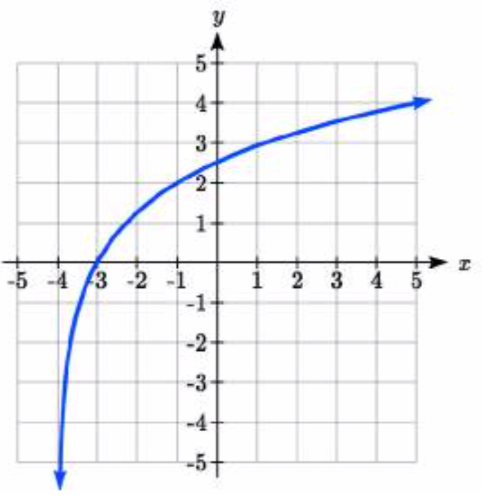
23. 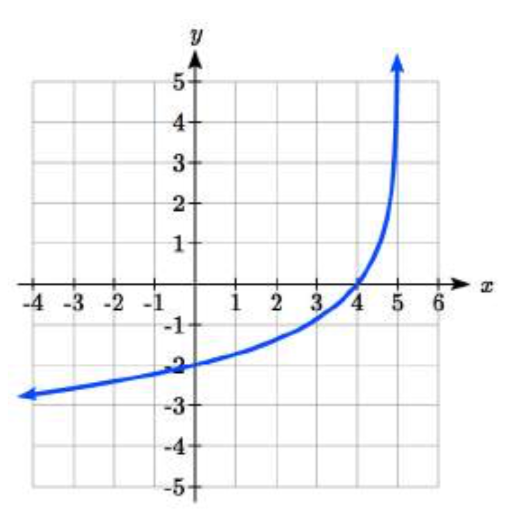 24.
24. 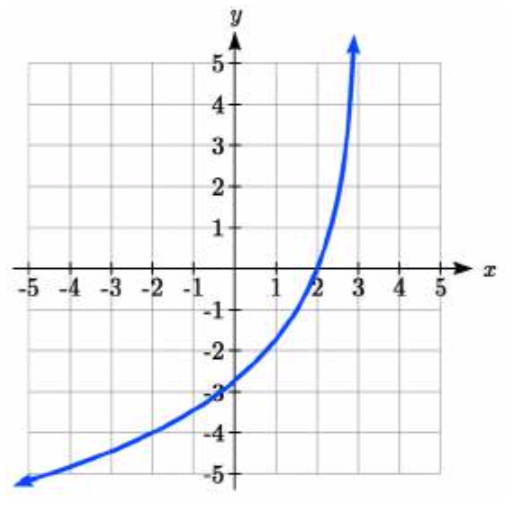
- Contestar
-
1. Dominio:\(x > 5\) V. A. @\(x = 5\)
3. Dominio:\(x < 5\) V. A. @\(x = 3\)
5. Dominio:\(x > -\dfrac{1}{3}\) V. A. @\(x = -\dfrac{1}{3}\)
7. Dominio:\(x < 0\) V. A. @\(x = 0\)
9.
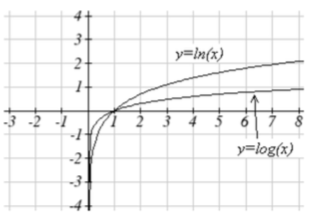
11.
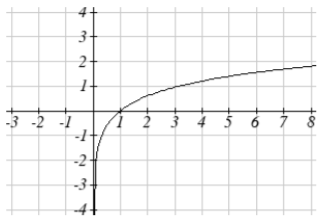
13.
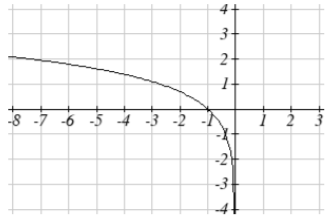
15.
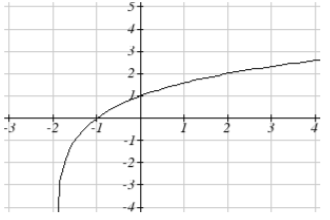
17. \(y = \dfrac{1}{\text{log}(2)} \text{log} (-(x - 1))\)
19. \(y = -\dfrac{3}{\text{log}(3)} \text{log}(x + 4)\)
21. \(y = \dfrac{3}{\text{log}(4)} \text{log}(x + 2)\)
23. \(y = -\dfrac{2}{\text{log}(5)} \text{log}(-(x - 5))\)


